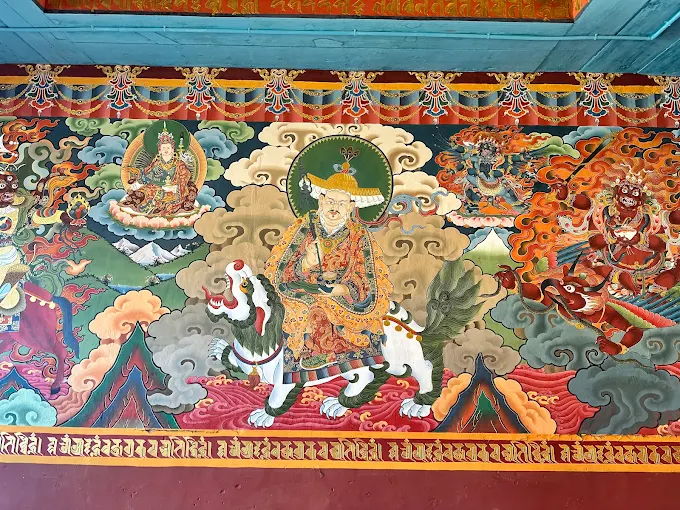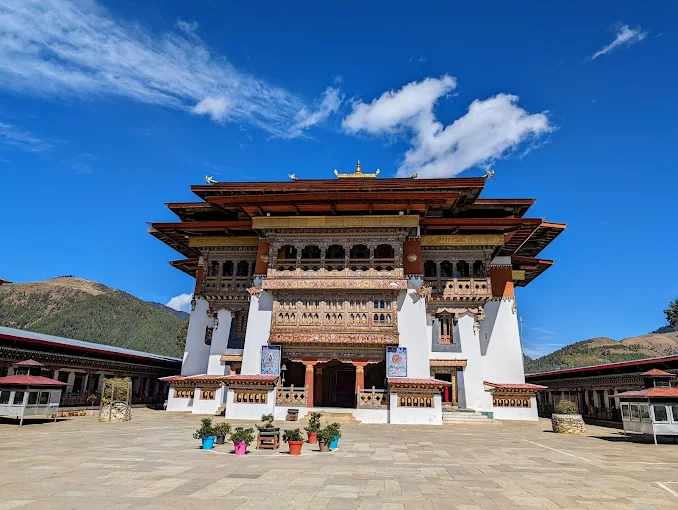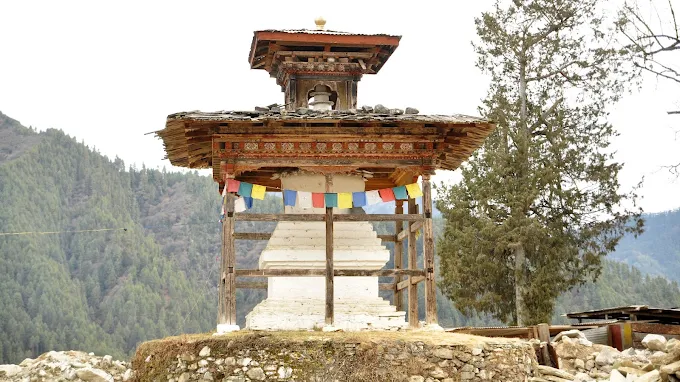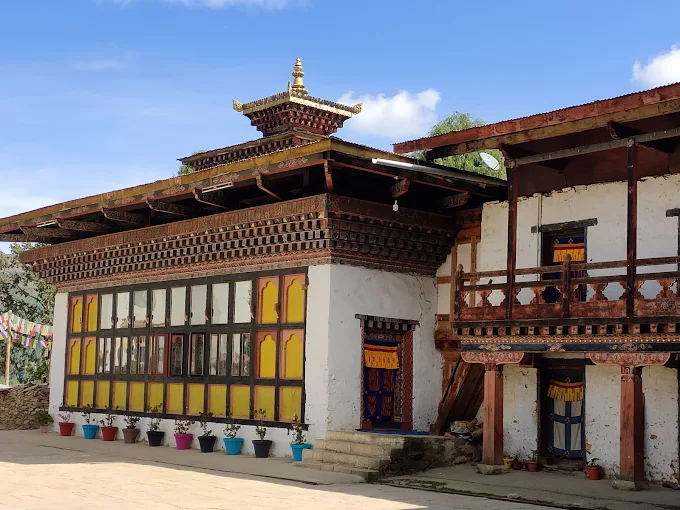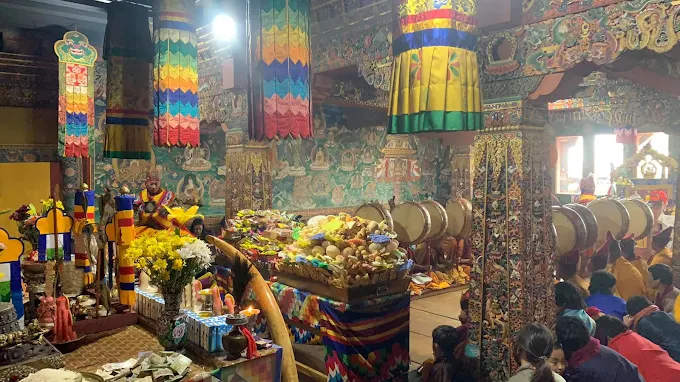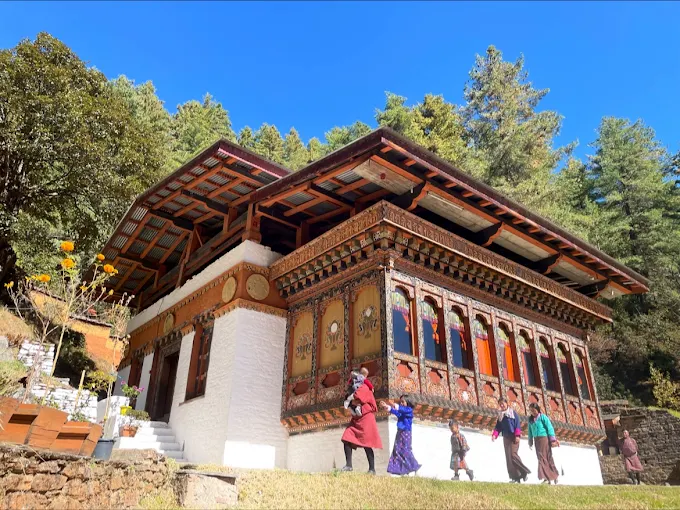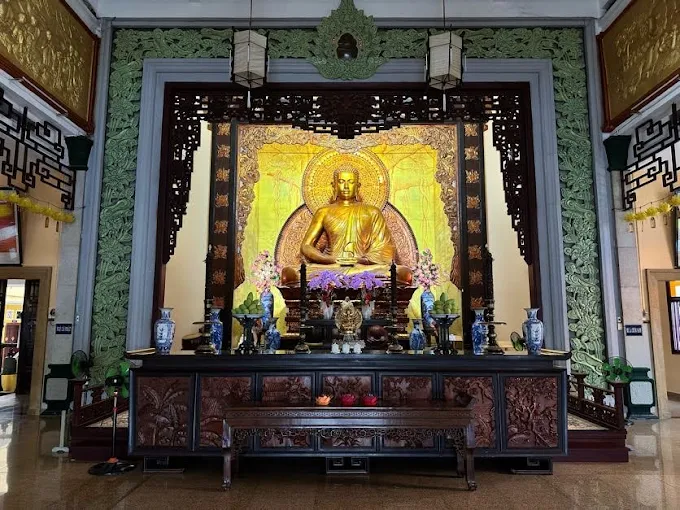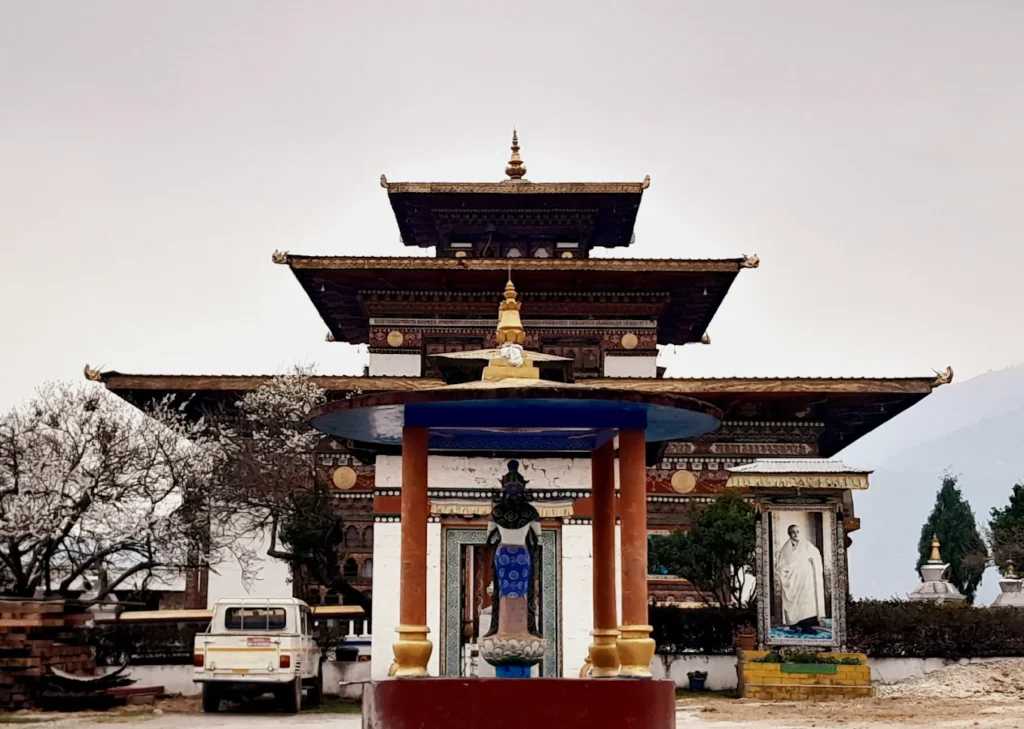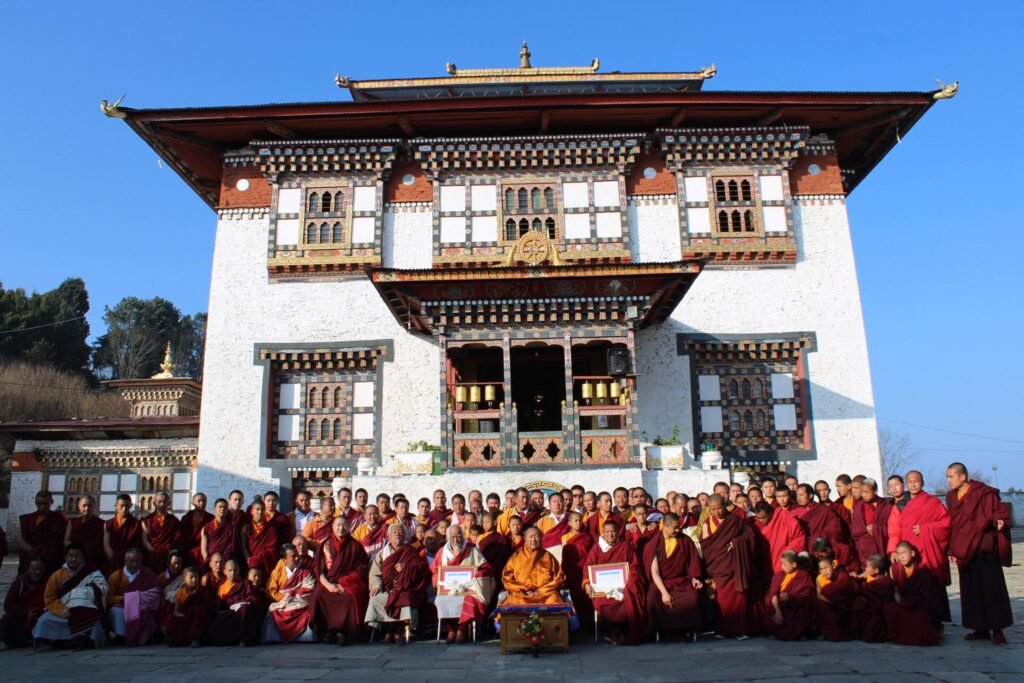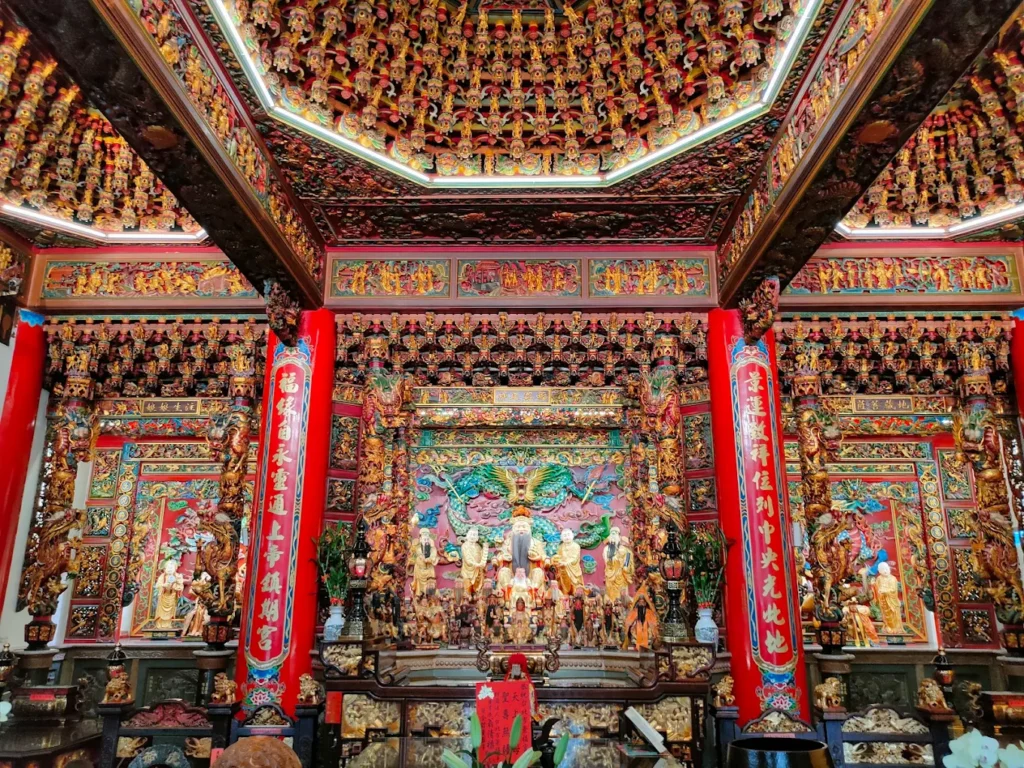Gangtey Monastery: The Sacred Hilltop of Phobjikha’s Nyingma Legacy
Perched gracefully atop a hill overlooking the expansive Phobjikha Valley, where the morning mist weaves through a landscape of pine and dwarf bamboo, Gangtey Monastery rises with quiet majesty, its stone walls catching the dawn’s golden light. Within the sacred main temple (lhakhang), monks chant the Om Mani Padme Hum mantra, their voices resonating around a statue of Guru Rinpoche, the revered figure of Nyingma Buddhism. Established in 1613 by Gyalse Rigdzin Pema Thinley, this Nyingma sanctuary serves as the principal seat of the Pema Lingpa tradition, its serene presence enhanced by the winter migration of black-necked cranes. The air carries the scent of juniper incense, lit to honor the spiritual heritage, while prayer flags flutter against the Himalayan breeze, blessing the valley below. From its elevated vantage point in Wangdue Phodrang Dzongkhag, the sweeping vista of Phobjikha unfolds, connecting the monastery to Bhutan’s natural and spiritual heart. This sacred haven invites travelers, seekers, and scholars to ascend its trails and immerse themselves in the tranquil essence of Nyingma devotion.
Whispers of the Cranes: Overview and Significance
Introduction to Gangtey Monastery
Gangtey Monastery, situated atop a hill in Wangdue Phodrang Dzongkhag, Bhutan, at an elevation of approximately 2,800 meters, stands as a revered Nyingma sanctuary, celebrated for its role as the main seat of the Pema Lingpa tradition and its scenic overlook of Phobjikha Valley. A moderate hike or drive from the valley floor reveals a tranquil retreat where the rustle of bamboo and the presence of black-necked cranes create a peaceful ambiance. Known as Gangtey Goenpa, it embodies Bhutan’s spiritual heritage, blending meditation with the natural beauty of its elevated location. A cultural and spiritual jewel, the monastery weaves history, ecology, and Himalayan reverence into a timeless refuge.
Historical Journey
Gangtey Monastery was founded in 1613 by Gyalse Rigdzin Pema Thinley, the grandson and reincarnation of the treasure revealer Pema Lingpa, fulfilling a prophecy made in the late 15th century. The original structure, built as a small lhakhang, was later expanded by the second Gangtey Tulku, Tenzin Legpa Dondrup (1645–1726), who rebuilt it in the form of a dzong, though smaller in scale. The monastery underwent significant restoration from 2000 to 2008, completed on October 10, 2008, with the consecration graced by the fourth King of Bhutan. This restoration preserved its role as a spiritual center, reflecting the resilience of the Nyingma tradition in Bhutan.
Cultural Significance
- Nyingma Devotion: Rooted in the Nyingma school of Tibetan Buddhism, the monastery venerates Guru Rinpoche and Pema Lingpa, emphasizing meditation and treasure revelation.
- Bhutanese Heritage: A spiritual anchor, it preserves rituals like mantra recitation and tshechu ceremonies, reflecting national identity.
- Ecological Legacy: Its location in Phobjikha Valley, a winter roost for black-necked cranes, highlights its environmental significance.
- Regional Influence: Pilgrimages and festivals draw devotees from Wangdue Phodrang and beyond, fostering community bonds.
Unique Legacy
- Hilltop Perch: At 2,800 meters, its commanding view of Phobjikha Valley distinguishes it among Bhutan’s monasteries.
- Pema Lingpa Tradition: As the main seat, it preserves the teachings of the treasure revealer.
- Restoration Resilience: The 2000–2008 rebuild reflects Bhutanese dedication to heritage.
- Cultural Symbol: Its crane connection mirrors Bhutan’s harmony with nature.
Community and Global Impact
- Local Devotion: The monastery hosts retreats and festivals, strengthening local Nyingma ties.
- Pilgrimage Hub: Visitors are drawn by its cranes and spiritual ambiance.
- Global Appeal: International nature enthusiasts and meditators seek its ecological and spiritual allure.
- Cultural Dialogue: Shared rituals unite Bhutanese and global visitors, fostering understanding.
Modern Relevance
- Spiritual Retreat: Gangtey offers a haven for mindfulness amidst nature.
- Cultural Preservation: It safeguards Nyingma practices, ensuring Bhutan’s heritage thrives.
- Ecological Inspiration: The crane migration enhances its global ecological significance.
Historical Anecdotes
- Pema Lingpa’s Prophecy: His late 15th-century vision led to the monastery’s founding.
- Tenzin’s Expansion: The 17th-century rebuild shaped its dzong-like form.
- Crane Tradition: The cranes’ circling flight adds to its mystique.
Social Role
- Community Hub: Festivals and retreats unite Wangdue’s Buddhists.
- Meditative Center: Monks guide pilgrims in spiritual practice.
- Charitable Spirit: Communal gatherings reflect Nyingma compassion.
Artistic Influence
- Thangka Art: Murals of Guru Rinpoche inspire Bhutanese artists.
- Cultural Icon: The valley view graces local imagery.
- Festival Art: Cham dance masks showcase Bhutanese craftsmanship.
Gangtey Monastery’s hilltop aerie, where Gyalse Rigdzin Pema Thinley once established a spiritual legacy, weaves a narrative of devotion and ecology that defines Bhutan’s Nyingma heritage. From its 1613 founding to its role as a crane-welcoming sanctuary, the monastery’s history resonates with the tranquility of Phobjikha Valley, uniting monks and nature lovers. Its sacred halls and scenic trails set the stage for an architectural tapestry that mirrors its Himalayan soul. As we delve into its physical and spiritual features, Gangtey’s design reveals how its elevated beauty nurtures profound meditation and environmental harmony.
Crafted by the Hill: Architectural and Spiritual Features
Iconic Design
Gangtey Monastery’s architecture blends Nyingma simplicity with its hilltop setting, creating a sanctuary that harmonizes with Phobjikha’s glacial valley. Whitewashed stone walls and wooden roofs, adorned with prayer flags, rise from the 2,800-meter elevation, reflecting Buddhist serenity. The dzong-like layout, centered on the tshokhang (prayer hall), prioritizes meditative function, with courtyards fostering community. Its perch above the valley, offering views of the Phobjikha landscape, amplifies its sacred resonance, tying the monastery to Bhutan’s Himalayan ethos.
Key Structures
- Tshokhang (Prayer Hall): The spiritual core, housing Guru Rinpoche’s statue, rebuilt in 2008.
- Utse (Central Tower): A multi-story structure with 18 pillars, expanded in the 17th century.
- Monk Quarters: Residential areas surrounding the gompa, restored during 2000–2008.
- Goenkhang: A temple dedicated to Sipey Gyelmo, a protective deity, with restricted access.
- Chorten Courtyard: Stone stupas honor lamas, encircled by prayer wheels.
- Kumbu Lhakhang Trail: A nearby temple, accessible via a one-hour walk.
Worshipped Statues
- Guru Rinpoche (Padmasambhava): A bronze statue, symbolizing spiritual guidance, radiates wisdom.
- Dhuesum Sangay: Three wooden statues (past, present, future Buddhas) in the upper chamber.
- Vajrasattva: A central figure in the Lamai Lhakhang, representing purification.
- Spiritual Role: Monks offer butter lamps to Guru Rinpoche, seeking enlightenment and blessings.
Materials and Techniques
- Construction: Timber wood and native stones, joined with Bhutanese methods, ensure durability.
- Artistry: Colorful murals and wood carvings, painted with mineral dyes, reflect Nyingma style.
- Cultural Essence: The design prioritizes meditative austerity, distinct from defensive dzongs.
Signature Elements
- Hilltop View: The 2,800-meter perch offers vistas of Phobjikha, a unique feature.
- Tshokhang Pillars: The 18 pillars symbolize strength and stability.
- Prayer Flags: Fluttering flags carry blessings across the valley.
Lesser-Known Features
- Ancient Murals: Faded paintings in the tshokhang depict Nyingma teachings.
- Sipey Gyelmo Shrine: A hidden temple with restricted entry.
- Old Prayer Wheel: A weathered mani wheel, in use since the 17th century.
Preservation Efforts
- Restoration (2000–2008): Rebuilt with traditional materials, consecrated in 2008 by the fourth King.
- Challenges: Weather and erosion affect stonework, requiring ongoing care.
- Modern Additions: Solar lights enhance evening accessibility.
Environmental Integration
- Valley Harmony: The monastery’s design respects Phobjikha’s ecosystem.
- Eco-Practices: Monks maintain trails and protect dwarf bamboo.
- Wildlife Haven: Black-necked cranes roost nearby, enhancing serenity.
Artisan Narratives
- Mural Painters: Local artisans restored murals, preserving Nyingma art.
- Wood Carvers: Craftsmen rebuilt the utse, blending tradition.
- Flag Weavers: Nuns crafted prayer flags, embedding blessings.
Symbolic Details
- Prayer Flags: Five colors balance elements, spreading dharma.
- Chortens: Represent the Buddha’s mind, guiding meditation.
- Statues: Reflect Nyingma lineage and purification.
Landscape Integration
- Hilltop Perch: Enhances meditative focus with valley views.
- Phobjikha Vista: The glacial valley mirrors inner peace.
- Pine Forests: Provide solitude and spiritual resonance.
Gangtey Monastery’s stone lhakhangs and sacred courtyards, overlooking Phobjikha Valley, are more than architectural marvels; they are sanctuaries for the Nyingma practices that define its spiritual soul. The statue of Guru Rinpoche, illuminated by butter lamps, anchors rituals that connect monks to Bhutan’s spiritual lineage. These hallowed spaces, alive with chants and crane sightings, invite visitors to engage with the monastery’s living traditions. As we explore its rituals, Gangtey’s role as a meditative and ecological retreat comes to life, guiding devotees toward enlightenment and harmony.
Rites of the Valley: Rituals and Practices
Daily Sacred Rites
- Morning Chanting: Monks recite the Om Mani Padme Hum mantra at dawn, fostering compassion.
- Meditation Sessions: Silent meditation, held twice daily, centers on Mahamudra practices.
- Butter Lamp Offerings: Devotees light lamps before Guru Rinpoche, praying for wisdom.
Unique Practices
- Crane Blessing: Monks offer prayers as black-necked cranes circle, a Nyingma tradition.
- Goenkhang Rituals: Ceremonies honor Sipey Gyelmo, seeking protection.
- Signature Ritual: Offering juniper incense, tied to the monastery’s spiritual heritage.
Festival Traditions
- Gangtey Tshechu (8th lunar month): A three-day festival with cham dances and a thondrol display.
- Black-Necked Crane Festival (November): Celebrates crane migration with cultural performances.
- Lhabab Duchen: Ceremonies honor the Buddha’s descent, with chorten circuits.
- Statue Veneration: Guru Rinpoche’s statue is adorned with silk during festivals.
Visitor Engagement
- Accessible Rituals: Visitors can join chants or offer incense, guided by monks.
- Offerings: Butter lamps and prayer flags, available at the monastery, invite participation.
- Nyingma Etiquette: Bow before statues and maintain silence during meditation.
Spiritual Community Roles
- Monastics: Around 100–140 monks, including gomchens, lead rituals and maintain the site.
- Lamas: Senior monks guide crane blessings and pujas.
- Lay Devotees: Valley villagers maintain trails and offer supplies.
Interfaith Connections
- Syncretic Practices: Some blend Nyingma rites with Bon offerings, honoring local spirits.
- Outreach: Festivals welcome diverse faiths, fostering unity.
- Education: Monks share Nyingma teachings with visitors.
Ritual Symbolism
- Butter Lamps: Represent wisdom illuminating the mind.
- Juniper Incense: Symbolizes purification and nature’s blessing.
- Cham Dances: Enact spiritual harmony with the valley’s ecology.
Seasonal Variations
- Autumn Rites: Vibrant with harvest, ideal for Gangtey Tshechu.
- Winter Blessings: Crane migration enhances festival focus.
- Monsoon Chants: Rain amplifies mantra resonance.
Monastic Life
- Daily Routine: Monks rise at 5:00 AM for chants, meditation, and maintenance.
- Community Service: Monks guide pilgrims and protect the site.
- Training Hub: Monks learn Nyingma philosophy, supporting Phobjikha’s faith.
Gangtey Monastery’s rituals, from the Om Mani Padme Hum mantra to crane blessings, breathe life into its hilltop sanctuary, connecting devotees to the Nyingma lineage. The monastery’s spiritual practices, rooted in Bhutan’s ecological faith, invite visitors to engage with its valley heart, whether through chants or nature observation. For travelers, these rites offer a glimpse into Phobjikha’s sacred traditions, accessible within its forested grounds. As we turn to visitor information, Gangtey’s hilltop setting guides practical planning, ensuring a meaningful journey to this tranquil retreat.
Journey to the Hilltop: Visitor Information
Navigating to Gangtey Monastery
- Location: Wangdue Phodrang Dzongkhag, 2,800 meters, accessible via a trail from Gangtey village or Phobjikha Valley.
- Landmarks: Near the Black-Necked Crane Information Centre and Kumbu Lhakhang, with Dzongkha and English signs.
- Routes: Hike from the valley floor (30–60 minutes) or drive to the hill base.
Address of Gangtey Monastery
- Dzongkha: Gangtey Goenpa, Wangdue Phodrang Dzongkhag, Bhutan.
- English: Gangtey Monastery, Wangdue Phodrang District, Bhutan.
Visiting Hours and Etiquette
- Hours: Open daily, 6:00 AM–5:00 PM, with meditation sessions in the morning.
- Etiquette: Dress modestly, remove shoes before lhakhangs, and avoid disturbing rituals.
- Nyingma Custom: Offer butter lamps with both hands and bow to statues.
Transport Options
- By Foot: Hike from Phobjikha Valley (30–60 minutes, easy to moderate difficulty).
- By Vehicle: Drive to the hill base via a rough road, then walk.
- By Horse: Local guides offer horses, arranged at the valley floor.
Accessibility and Safety
- Mobility: Steep trails may challenge those with mobility issues; no ramps available.
- Safety: Stable paths with guideposts; carry water and layers for altitude.
- Tips: Wear sturdy hiking boots and bring a packed lunch.
Amenities and Surroundings
- Facilities: Basic restrooms near the monastery; no shops on-site.
- Nearby: Kumbu Lhakhang and Black-Necked Crane Information Centre, within 1–2 km, offer cultural experiences.
- Dining: Picnic areas encourage packed meals, with options in Gangtey village.
Immersive Visitor Tips
- Best Timing: Early morning hikes offer clear views and monk chants.
- Sensory Moments: Inhale pine-scented air and hear crane calls.
- Statue Connection: Offer butter lamps to Guru Rinpoche and meditate briefly.
- Festival Planning: Attend Gangtey Tshechu or Crane Festival for cultural immersion.
Nearby Cultural Experiences
- Kumbu Lhakhang: A nearby temple, 1 km away, offers spiritual insight.
- Black-Necked Crane Information Centre: A conservation site, 1 km away, highlights crane ecology.
- Phobjikha Valley: A glacial valley, surrounding the monastery, features natural beauty.
Photography Tips
- Best Angles: Capture the tshokhang at sunrise for golden light.
- Respectful Shots: Avoid photographing monks during meditation without permission.
- Scenic Views: The Phobjikha Valley offers stunning panoramas.
- Equipment: A lightweight camera suits the trek.
The ascent to Gangtey Monastery, guided by Phobjikha’s forested trails, is a pilgrimage that blends spiritual discovery with ecological connection, inviting visitors to engage with its Nyingma traditions. The monastery’s lhakhangs and courtyards, vibrant with chants and crane sightings, offer a window into Bhutan’s sacred heart, where tranquility feels palpable. Beyond its hilltop beauty, Gangtey’s deeper cultural and spiritual significance enriches the experience, revealing the essence of Himalayan Buddhism. As we explore these insights, the monastery’s role as a beacon of peace and nature comes into sharper focus, deepening our connection to its sacred legacy.
Insights of the Valley: Cultural and Spiritual Reflections
Nyingma Philosophy
Gangtey Monastery embodies Nyingma’s core: compassion and wisdom through meditation and treasure revelation. Guru Rinpoche and Pema Lingpa inspire devotees to seek enlightenment, reflected in chants and crane blessings. Mahamudra teachings emphasize direct realization, guiding monks toward spiritual depth.
Environmental Spirituality
The monastery’s hilltop perch ties it to Himalayan reverence for nature. Phobjikha’s pines and crane roosts foster meditative calm, with offerings honoring local spirits. The landscape invites reflection on harmony with the natural world.
Artistic Symbolism
Thangka murals depict Guru Rinpoche’s legacy, symbolizing spiritual insight. Chortens represent the Buddha’s mind, while prayer flags balance elements. These elements weave Nyingma ideals into the monastery’s aesthetic.
Community Resilience
Founded by Pema Lingpa’s lineage, Gangtey reflects Bhutanese perseverance through time. Its 2008 restoration showcases collective faith, sustained by community efforts, uniting Wangdue’s Buddhists.
Environmental Stewardship
The monastery’s slopes foster Buddhist eco-ethics. Monks protect trails and dwarf bamboo, ensuring balance. Visitors are urged to honor Phobjikha’s sanctity.
Meditative Practices
Nyingma meditation, including Mahamudra, cultivates awareness. The tshokhang offers spaces for valley retreats, guided by lamas, amplifying inner peace.
Cultural Narratives
- Pema Lingpa’s Prophecy: His vision inspires devotion.
- Crane Legends: Their circling flight links past and present.
- Festival Lore: Gangtey Tshechu dances carry ancient traditions.
Historical Context
- Nyingma Roots: Pema Lingpa’s revelations shaped Bhutan’s identity.
- Tenzin’s Era: The 17th-century expansion strengthened its role.
- Modern Revival: The 2008 rebuild reflects cultural continuity.
Reflecting on the Journey
Gangtey Monastery, cradled on Phobjikha’s sacred hilltop, is a sanctuary where tranquility meets wisdom. Its lhakhangs and courtyards, alive with Guru Rinpoche’s legacy, embody Bhutan’s Nyingma soul, inviting all to seek enlightenment. The monastery’s trails, worn by centuries of pilgrims, tell a story of resilience and devotion, rooted in Himalayan faith. Whether meditating before Dhuesum Sangay, witnessing the crane migration, or tracing Bhutan’s spiritual heritage, visitors find a space to reflect and connect. As you descend, the pine scent and prayer flags’ flutter linger, a reminder that peace is always within reach.


